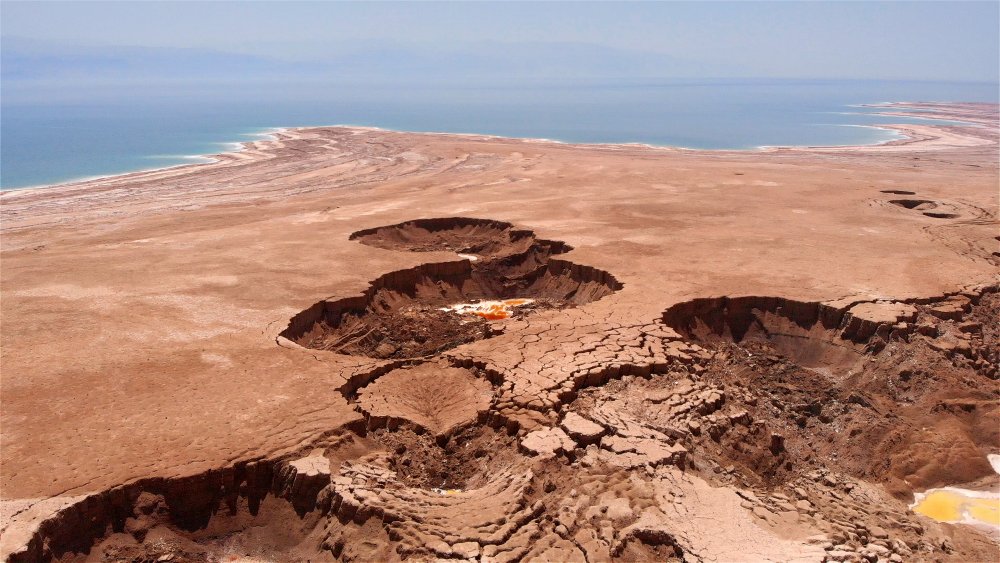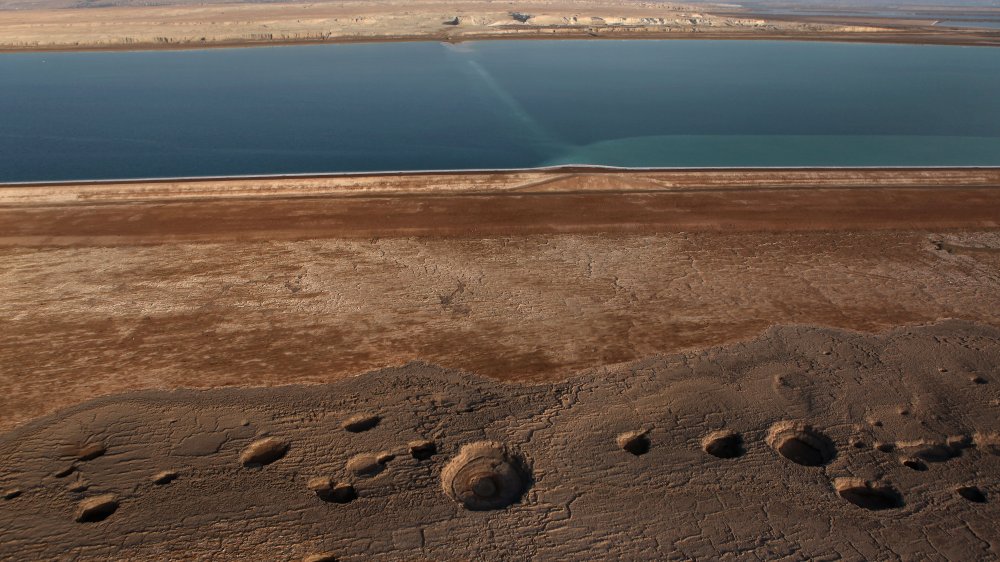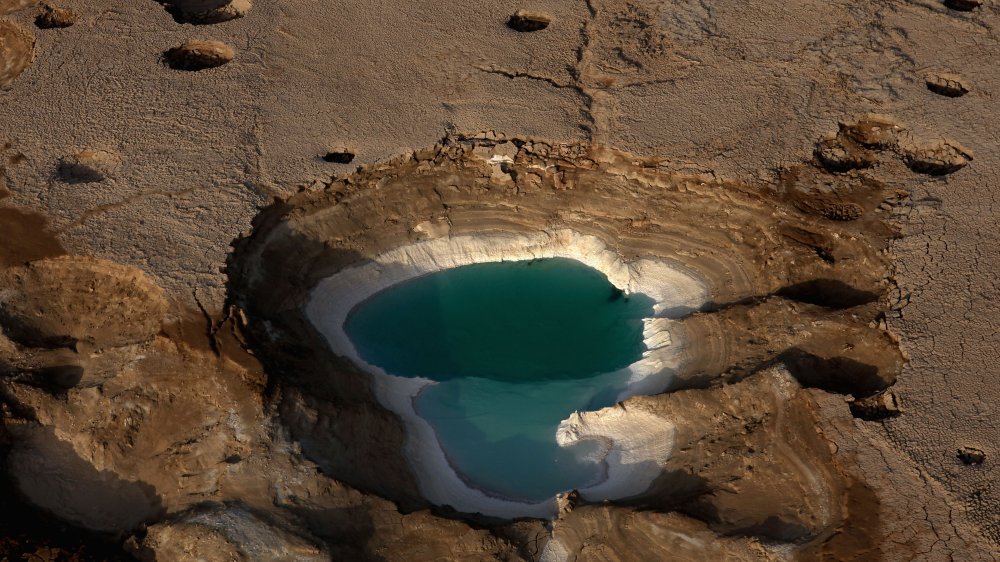How Sinkholes Are Destroying The Dead Sea
The Dead Sea — at 413 meters (1,414 feet) below sea level, already the lowest point on the Earth's surface, according to CNN – has been consistently sinking further into the ground over the last 50 years. A study reported by Haaretz found that its water level fell six meters in each of the first two decades after 1976. It dropped another nine the following decade. The one after that: 11 meters. And the trend is only increasing, causing scientists to worry that the Dead Sea will soon be one of many parts of our world that will be gone in 100 years.
The primary cause of such rapid depletion of the Dead Sea is — you guessed it — human interference. The sea lies on the border of Jordan to the east and Israel and Palestine to the west. Recent dam projects in those countries, and another in Syria, have spurred the draining. Israeli and Jordanian industrial plants that extract potash and other minerals have been cited as a secondary cause, accounting for up to 20 percent of the annual water loss.
But a third cause of the destruction of the Dead Sea has made a dramatic appearance over the last few decades, a quirky anomaly in a weird part of a bizarre world (which is even more bizarre than you thought). As the trend began to intensify, however, it became a problem threatening the sea's very existence.
Why so many sinkholes are opening up on the Dead Sea shore
A study reported by Live Science found that many of the sinkholes threatening the Dead Sea have opened up along fault lines in the Jordan Rift Valley. The study suggested that the large salt deposits within these faults have been dissolved by fresh water, leaving huge empty spaces just below the surface. After a while, the surface becomes unstable and large sinkholes open up, sometimes with dramatic results. According to Eos, one such sinkhole that appeared suddenly at a campsite on January 3, 1998 took a member of the camp staff with it. (Looks like the most dangerous camping spots in the U.S. now have global competition.) That crater measured a measly eight meters (26 feet) deep, but scientists have observed Dead Sea sinkholes as deep as 25 meters (82 feet) deep and a whopping 40 meters (131 feet) wide. (Still, that's nothing compared to the world's largest sinkhole.)
That unfortunate camp staffer fell into one of the first sinkholes to open up on the Dead Sea coast. As the Haaretz report found, there were 220 sinkholes on the edge of the Dead Sea in 1996. That number shot up to 1,808 after a decade. By 2015, 5,548 sinkholes dotted the Dead Sea's shores, primarily along its western coast. "It is almost certain that 20 years from now, there will be no access to the natural shoreline," wrote journalist Nir Hasson.
There is an odd ecological upside
As that camp staffer's tragic story shows us, the sinkholes are threatening the Dead Sea's tourism industry, quickly turning the place into one of the world's popular getaways you should strike from your list. The possibility of being swallowed whole by the Earth itself is a pretty convincing argument to choose a different vacation destination. A healthy Dead Sea is essential for a healthy tourism sector, Israeli environmental activist Gidon Bromberg told Smithsonian in 2005. He was working on a project to persuade farmers in the region to plant crops that don't require diverting freshwater, in order for it to flow back to the Jordan River where it belongs. "The potential for tourism-dollar return of a healthy river and a healthy Dead Sea outweighs the little return that agriculture offers," he said.
In a weird turn of ecological events, however, the sinkholes have actually opened up new opportunities for other forms of life in the Dead Sea. A study published in the journal Aquatic Sciences in 2019, posted at Springer Link, found that 94 of the sinkholes had "dramatically increased the number of aquatic habitats surrounding the Dead Sea." The zoologists from Tel Aviv University discovered that the sinkholes "are populated mainly by aquatic insects, which have high tolerance of a variety of environmental conditions." So, from a scientific standpoint, the sinkholes aren't destroying the Dead Sea per se, but rather creating new environments where different types of life thrive.


